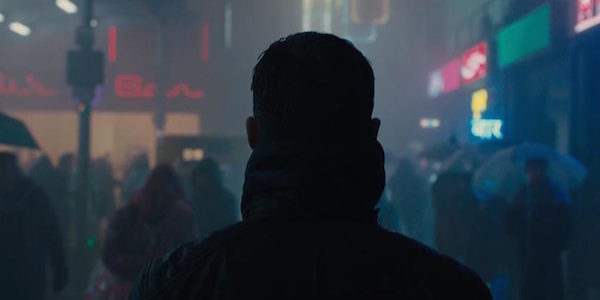“LOS ANGELES NOVEMBER, 2019.” So, with that stark title card, begins the film that presented the most fully realized vision of the city’s future in cinema history to that point — and maybe still to this day. It also fixed its setting in the Western imagination as the go-to image of urban dystopia, though when Blade Runner premiered almost three and a half decades ago, that date must have felt comfortably distant. Now, a week before the year 2017 begins, Los Angeles may have got on track to become a densely built metropolis with high-rise-lined streets filled night and day with activity (and not just of the vehicular kind) later than Ridley Scott and company imagined, but the transformation looks well underway nevertheless.
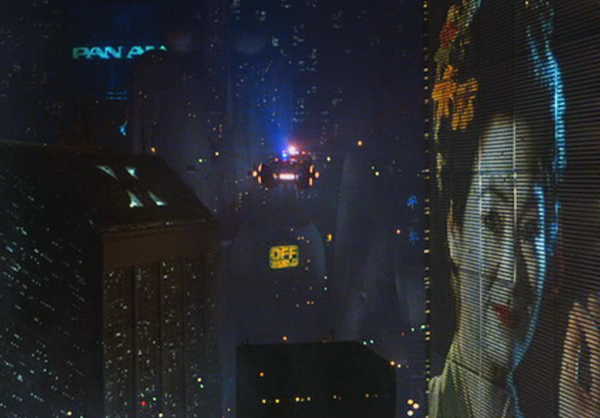
Before its completion, however, it looks as if Hollywood will treat us to a new Los Angeles of the future with the sequel Blade Runner 2049, whose teaser hit the internet just last week. Speculation about a second Blade Runner movie has gone on for years and years, at least since the first’s recovery from its dismal initial release with improved director’s cuts and breathless critical re-evaluations. We know so far that the sequel will, like the original, take place in Los Angeles and feature Harrison Ford as Rick Deckard, the ex-LAPD artificial human-hunting (and possibly artificial human-being) Blade Runner of the title. Set 30 years after the events of Blade Runner, it will also introduce such new characters as its comparatively young protagonist, another Blade Runner called Officer K and played by Ryan Gosling (veteran of such impressive, and impressively dissimilar, recent Los Angeles movies as Drive and La La Land).
Blade Runner, dating as it does from an era of American fear and trembling over the skyrocketing value of the yen, posits a thoroughly Japanified Los Angeles: neon signs in untranslated kanji, ramen stands on the sidewalks, and most iconic of all, product-endorsing video geisha towering hundreds of feet in the air. That was, in some sense, the movie’s least fanciful element, given the number of businesses, properties, and towers in Los Angeles (downtown as well as over in Century City, that onetime downtown of the future) either built or purchased by Japanese money. Nobody could then have foreseen that Japan’s economy would stall out in the 1990s, taking whatever plans it may have had to render America its economic colony right off the table.
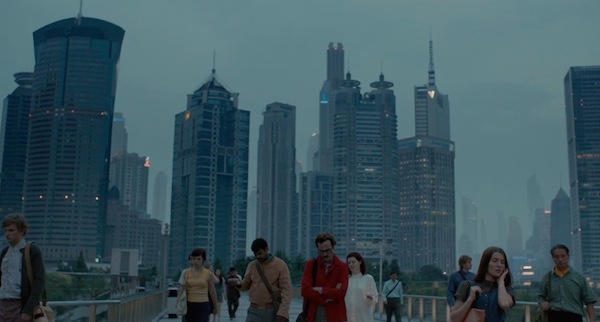
As the 20th century became the 21st, America’s worries shifted toward China. In 2013 they manifested onscreen, albeit in a comparatively benign fashion, in the only vision-of-Los Angeles’-future-realizing challenger Blade Runner now has: Spike Jonze’s Her. Instead of a Japanified city, Her takes place in a Sinified one, completing Los Angeles’ real-life process of urbanization by digitally importing whole clusters of gleaming, pointy, placeless new skyscrapers straight from Shanghai. Joaquin Phoenix’s milquetoast protagonist passes with reasonable seamlessness between such recognizable Los Angeles locations as the Disney Concert Hall and the Hollywood/Western subway station to broad Chinese elevated walkways and sleek Chinese high-speed trains (though taking no great pains to conceal the carful of Chinese passengers staring at both the disembarking Phoenix and the camera filming him).
But what near-future sci-fi picture dares imagine a Koreanization to come? The self-described “shrimp” between the “whales” of China and Japan might seem unlikely to become an reckless, all-consuming economic and cultural force, but certain signs show that Korea’s time — at least in certain kinds of speculative fiction — has come. Back in 2009, Duncan Jones’ impressively eerie debut Moon took place in a Korean future, albeit one less envisioned than implied. Its minimalist form, in stark contrast to the Blade Runners of the world, required little more in the way of a cast than Sam Rockwell, starring as an astronaut approaching the end of his lonely three-year stint as the sole maintenance man in an automated lunar mining facility called Sarang.
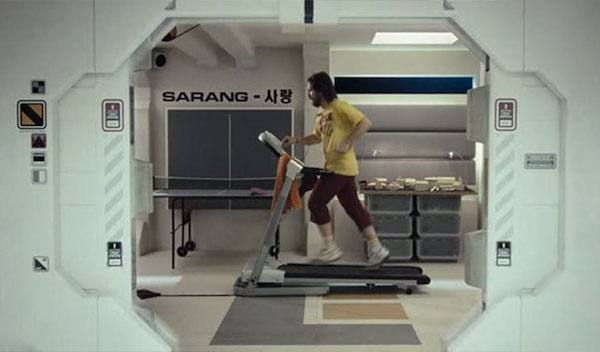
Every student of the Korean language, or of melodramatic Korean television dramas and pop music, will recognize the word. “My girlfriend at the time was Korean,” Jones said in one interview by way of explanation, “and the name of the base — Sarang — is Korean for love so that was me being a bit of a romantic. Korea also has one of the most developed robotics programs and it’s one of the nations you could accept would be involved in this technologically ambitious program.” Moon‘s action seldom leaves the base, and so we see its name in many shots, emblazoned in black on its off-white walls in both the English and Korean alphabets.
Another two-syllable (and thus two-character) Korean word appears prominently on a structure in the Blade Runner 2049 teaser: haengun, (행운) or “good luck,” emblazoned on the glass above the door to some kind of dilapidated hotel in which K finds the 30-years-vanished Deckard holed up. This, needless to say, set the cinephile community over here abuzz. The mind of a Blade Runner fan never strays too far from the movie in 21st-century Seoul, an if you take a look at photographer Robert Koehler’s cyberpunk photographs of the city — all of the spaces and structures depicted in which do really exist — you’ll understand why.
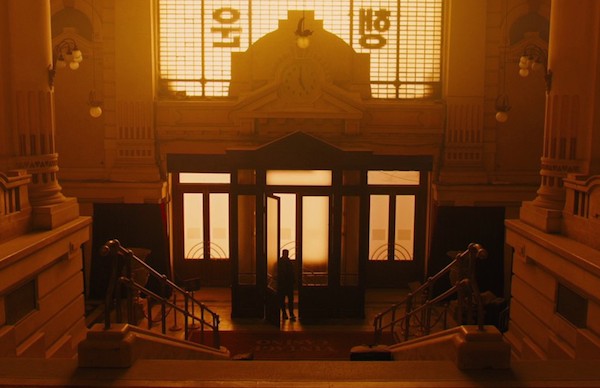
A Seoul-Los Angeles hybrid would make the ideal backdrop for a new Blade Runner movie, although as director Dennis Villeneuve tells it, Blade Runner 2049‘s setting, whatever its cultural influences, will feel more post-apocalyptic, more blasted and elemental: “The climate has gone berserk,” he recently said, hinting at the incorporation of another set of modern anxieties altogether. “The ocean, the rain, the snow is all toxic.” One of those video geisha was, after all, Korean (the actress, Alexis Rhee, would later appear in another Los Angeles movie, Crash, playing a middle-aged lady with the preposterous name of “Kim Lee”), and the $1.2 billion currently building the Wilshire Grand Center, which will open next year as Los Angeles’ tallest skyscraper, comes from the Korean conglomerate Hanjin.
All this seems to add up to something more promising than the various other Blade Runner sequels, prequels, internet-based miniseries, and just-unrelated-enough universe-continuations proposed over the past few decades. Still, as a near-obsessive over both the original movie and the city of Los Angeles who has made more than one video essay about the movie’s vision of the city (as well, for that matter, as others on Her, Drive, and Crash), not to mention one with a personal investment in Korea, I await Blade Runner 2049‘s October 2017 release with a rich mixture of excitement and trepidation. But whatever my reservations, I wish its makers 행운.
Related Korea Blog posts:
Living the Vertical Life in Seoul
Learning from the Korean City
Why I Left Los Angeles for Seoul
A Korean Travel Writer Reveals the Los Angeles Even Angelenos Don’t Know


